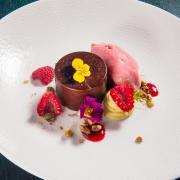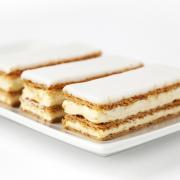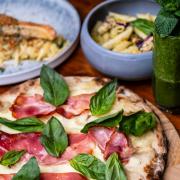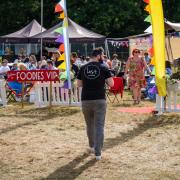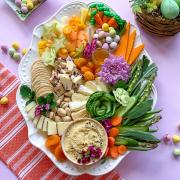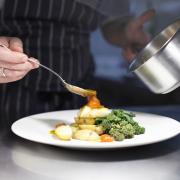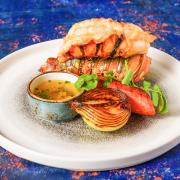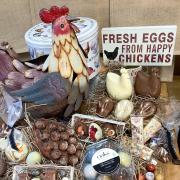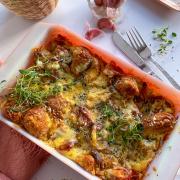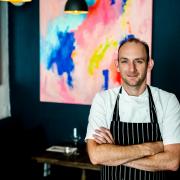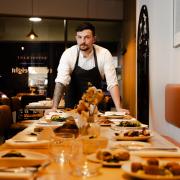Why do the Crawley family of TV’s Downton Abbey need so many dining implements? Cheshire Life visits a local ‘Downton Abbey’ to understand what went on in grand dining rooms 100 years ago

Downton Abbey is back to fascinate millions. Some love the soap opera elements – what will happen between Anna and Mr Bates? Will the Crawley finances be saved? Others enjoy glimpsing the early 20th century aristocratic world, not least the sparkling set pieces around the dining table. But are these accurate?
Lyme Hall, a large mansion set in Lyme Park at Disley, is as impressive as Highclere Castle, which is the real Downton. Ten minutes from gates to house says wealth! Lyme Park’s Curator Sara Burdett, Collections Manager Kat Croxford and House Steward Ellie Fisher explained the grand Edwardian style of the dining room that is a visual feast.
The dining room was an important room at Lyme Hall, and central to entertainment. ‘By the Edwardian period here at Lyme we do have strong evidence of what it looked like, good photos of the room,’ says Sara: ‘At that time you’re getting smaller parties and groups, maybe after shooting parties, but not necessarily these big formal dining room occasions.’
Nevertheless much about the room makes a statement about the Legh family who owned it from the 14th century to 1946 when it passed to the National Trust. We are surrounded by ancestral portraits. The china is the finest Sèvres porcelain from 1802. And the cutlery conveys historic rootedness: ‘The cutlery is from different dates – it’s about style,’ says Sara: ‘You’ll notice one fork has three tines while the other has four. The three is possibly 18th century.’
Each place has a large soup spoon, then a knife and fork for the fish course, and larger versions for the meat. Ellie confirms that she and her colleagues, like Carson the Downton butler, use rulers when setting out the flatware (only knives are cutlery Sara tells me).
‘You’ll see the soup plates at the end, ready to be ladelled out by the head of the household. So it was not the butler serving in that way. It’s almost like school dinners,’ says Sara. ‘This was an evolution from the much more formalised way the Victorians ate, it has become a little more relaxed, so you get that sort of service. And there was increasingly a wish to have food that was not cold, so the dining room here is now close to the kitchen, and a dumb waiter next door brought food upstairs rapidly.’ On the side table a spirit burner is ready for use to the same end.
Four male servants, headed by the butler, would bring the food to table, and replenish the settings as the meal progressed. ‘Physical contact between you and your servants wouldn’t occur, the waiters – the small silver platters on which glasses etc were carried – prevented that,’ she continues.
On the side-table along with the next two flights of glasses there are dessert spoons, and more knives and forks, a potential minefield for less privileged guests. ‘You had to make sure you were using the right cutlery, it was a social indicator, a clear way of understanding people’s status,’ explains Sara.
Though far fewer wines were served by the Edwardians than Victorians, they were not abstemious: ‘Potentially for a meal like this there would be four wines, to include sweet wines and things that we’d now think of as taken before a meal, like sherries, Madeiras. Sometimes a wine would even be served with the soup course,’ she adds.
On the side table stand decanters and a wine funnel: ‘It was very rare that wine was straight from the bottle. It was not the way it was done.’
Within reach of every diner sits a salt dish with its tiny spoon, though other condiments were less accessible – brought to the head of the table and passed round.
As it was impolite to reach for them that could mean a long wait. Not so the meat juices in their little Sèvres pots, one per person.
The early 20th century marked the transition from Victorian grandeur to something simpler. Witness the table decor: ‘The floral displays in flutes were fairly typical of the way flowers would have been displayed in the Edwardian era, not the big festoons you got in earlier years that people couldn’t see through or over!’ says Sara. But the centre piece is far from simple, a magnificent creation to hold a pineapple and sweetmeats it dates from 1760, crafted by silversmith Emick Romer.
And if that didn’t impress guests, its burden would: ‘They grew exotic flowers and fruits, probably even pineapples, in hothouses here,’ says Kat. Many other elements of the meal came from farms on the estate and the kitchen gardens.
‘That infrastructure existed prior to the First World War, but that conflict was so destructive for this lifestyle because the men who didn’t come back were those who would have been in service. Lots of things changed. Gone was the formality of this sort of eating, it just didn’t happen,’ concludes Sara.
But don’t expect to see the Crawley family dining off trays balanced on their knees for quite a few series to come!




